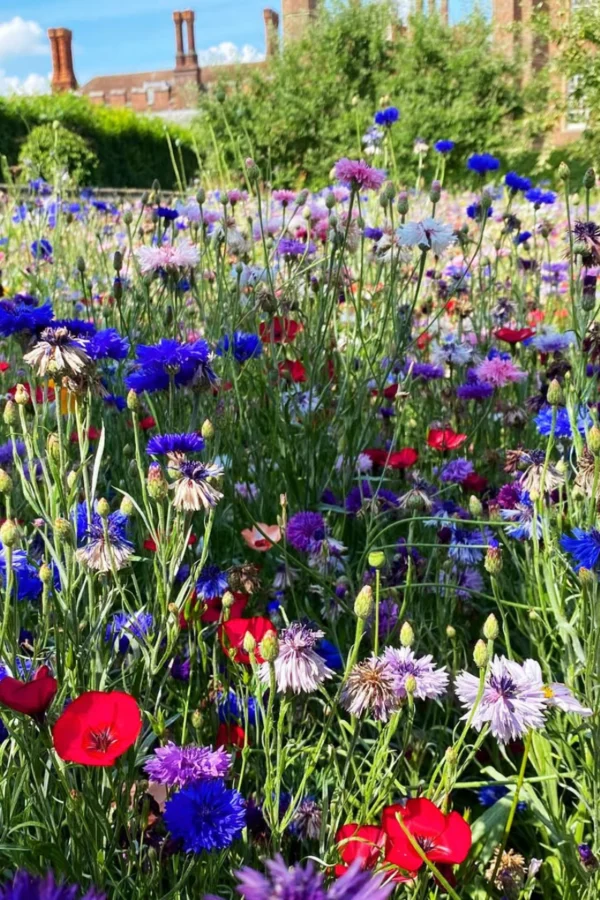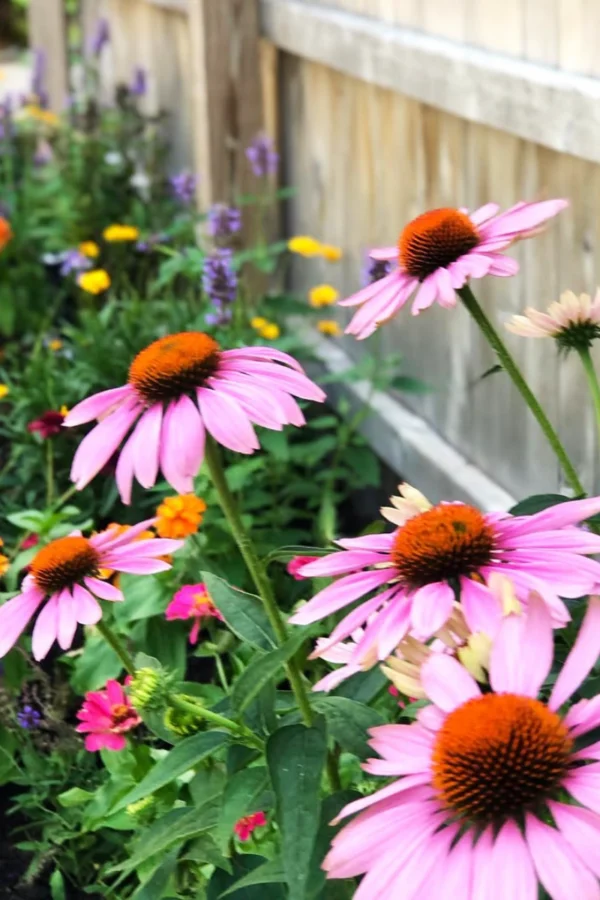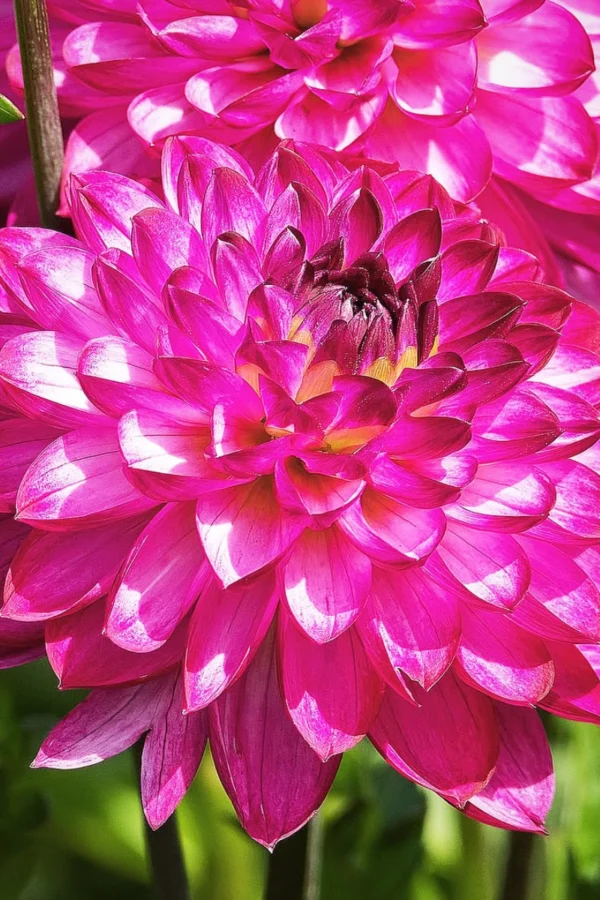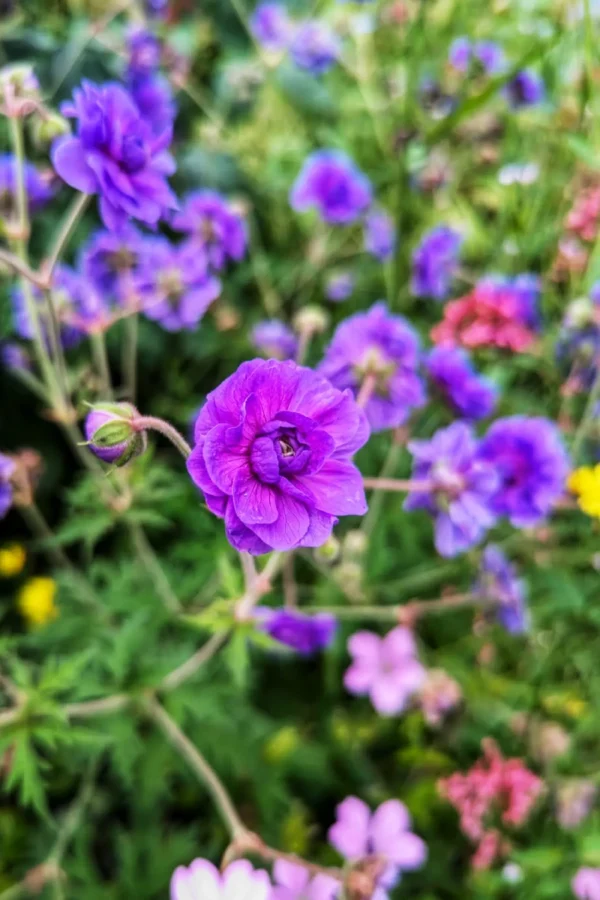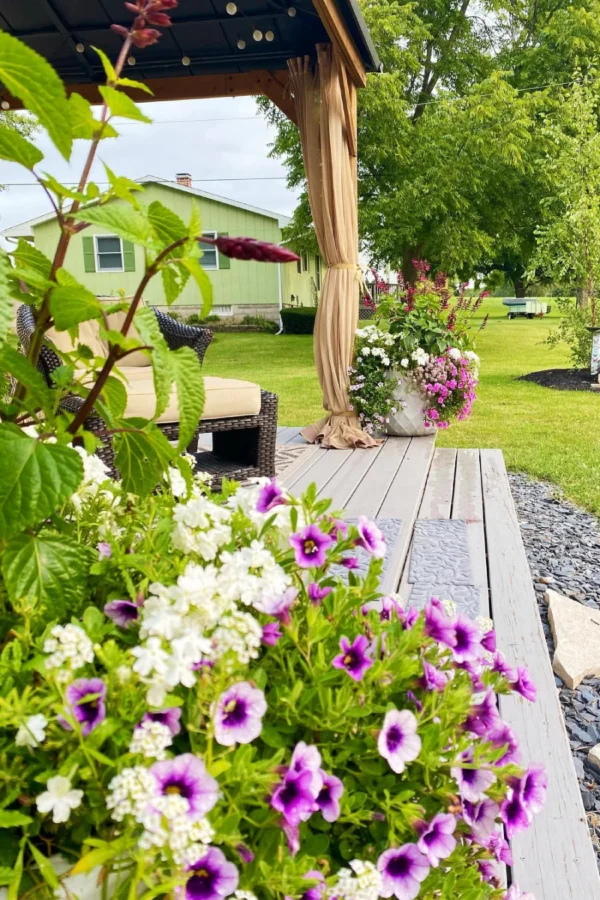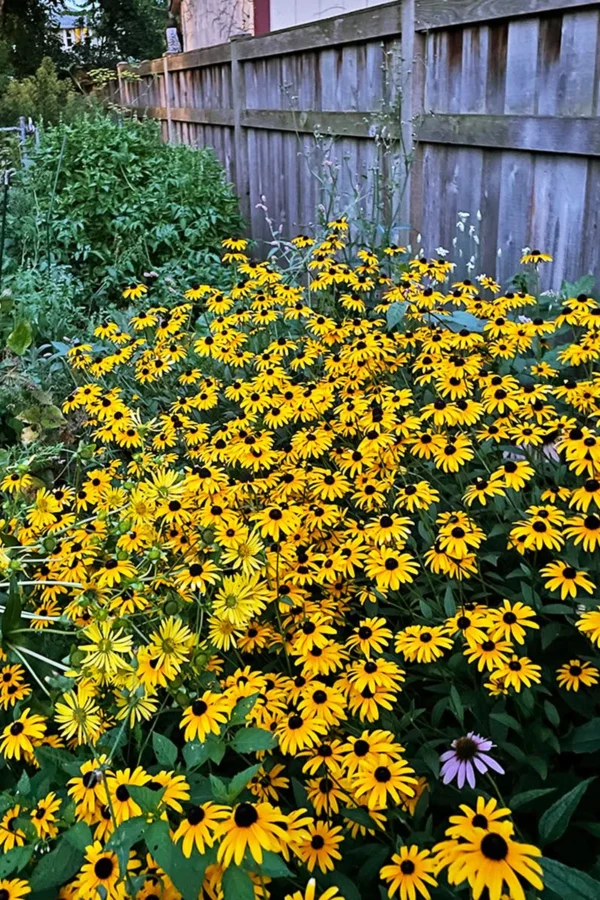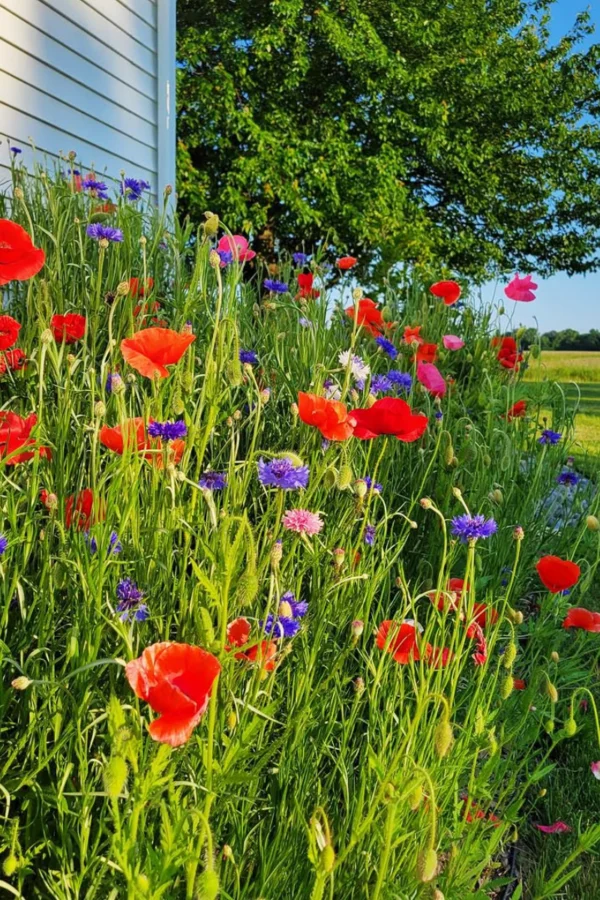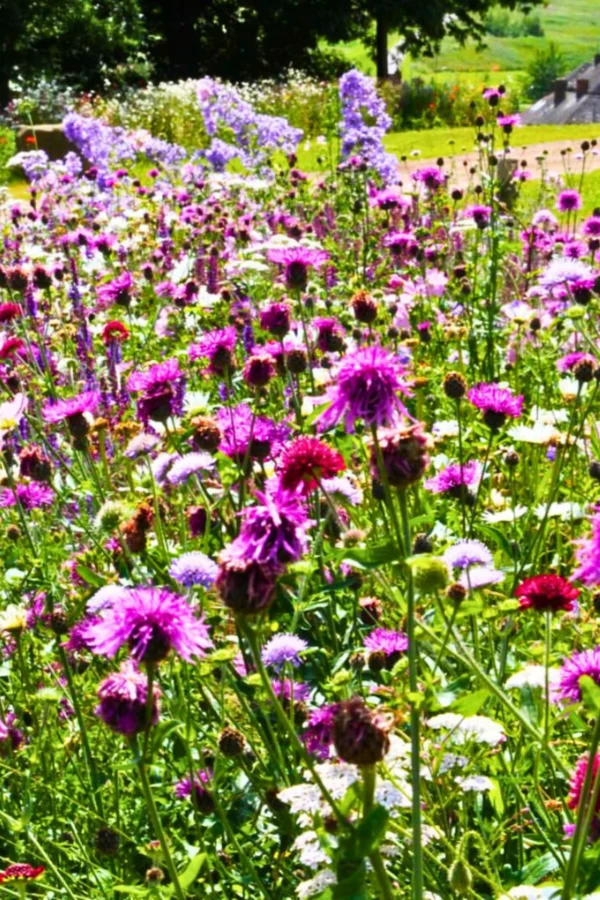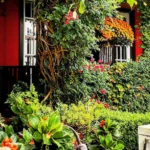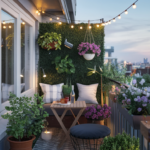This one was especially fun to dive into. I spent a good chunk of time researching wildflowers, scrolling through hundreds of images, and honestly, getting completely lost in the process. Pinterest has that effect—one minute you’re looking for inspiration, the next you’re deep in a scroll, mesmerized by endless stunning gardens. Wildflowers are no exception. They have this effortless charm, the kind that turns any space into something special.
Picture this: You step into your backyard, the air warm with the promise of spring. Colors explode around you—pinks, yellows, deep blues—petals swaying with the breeze like they’re part of some secret dance. Bees hum, butterflies flit between blossoms, and for a moment, everything feels just a little lighter.
In a small yard like ours, space is limited, but a wildflower patch? That’s an easy yes. With warmer days ahead, it’s something we’re seriously considering.
Why Wildflower Gardens Work Anywhere
You don’t need a sprawling landscape to pull off a wildflower garden. A tiny space can be just as stunning with the right setup. Here’s where they shine:
- Front Yard Charm: A mix of bright wildflowers makes for an eye-catching, welcoming entrance.
- Backyard Bliss: Fill in bare spots or create a border of blooms for a softer, more inviting space.
- Hidden Corners: A neglected area instantly transforms with a mix of colors and textures.
- Cut Flower Magic: Grow a patch just for fresh bouquets—your home will thank you.
Choosing the Right Look
It’s all about the vibe you’re going for. A wildflower garden can be:
- Romantic & Layered: Think English cottage garden, bursting with lush, overflowing blooms.
- Natural & Untamed: A meadow-style sprawl, carefree and effortlessly beautiful.
- Functional & Fresh: A small cut flower garden, perfect for bringing blooms indoors.
After scrolling through so many beautiful images, one thing is clear—wildflower gardens aren’t just beautiful. They’re a feeling. One that lingers long after you step away.
Wildflower Garden Themes
Every wildflower garden has a personality of its own. Some feel soft and romantic, like something pulled straight from a storybook. Others lean wild and free, bursting with untamed beauty. It all comes down to the vibe you want.
Choosing Your Wildflower Garden Style
- Secret Garden Magic – Think climbing vines, arched trellises, and a tucked-away feel. It’s all about mystery, a space that feels like it belongs in an old novel.
- English Cottage Charm – A little structured, a little chaotic, and completely enchanting. Picture wildflowers spilling over pathways, mixing with cultivated blooms in a way that feels effortless.
- Meadow-Inspired Beauty – Free-spirited and unbothered. Tall grasses, native wildflowers, and a soft, breezy look that feels like nature just did its thing.
Where to Plant for Maximum Impact
A wildflower garden can fit just about anywhere, but these spots work especially well:
- Front Yard Showstopper – Bright, colorful wildflowers add instant curb appeal and a warm, welcoming touch.
- Backyard Hideaway – A cozy spot wrapped in blooms makes the perfect family gathering area or quiet escape.
- Layered Beauty – Place tall stunners like foxgloves and sunflowers at the back, then bring in shorter blooms like poppies and coreopsis up front. This adds depth and makes every section feel intentional.
There’s something about wildflowers that just pulls you in. They’re both carefree and breathtaking, the kind of beauty that doesn’t try too hard but always stands out.
Choosing the Right Wildflowers
Choosing the Right Wildflowers for Your Garden
Picking the right wildflowers can be the difference between a thriving, effortless garden and one that struggles. It all comes down to climate, soil, and sunlight. Some wildflowers love full sun, stretching toward the light, while others do best in partial shade or cooler spots. Matching your flowers to your yard’s conditions? That’s the secret to a low-maintenance, stunning space.
Start with Native Wildflowers
If you’re not sure where to begin, native species are always a smart choice. They’re already adapted to your area, which means they’re easier to grow, require less upkeep, and attract local pollinators like bees and butterflies.
Some great native wildflowers to try:
- Purple Coneflowers – Hardy, vibrant, and loved by butterflies
- Black-eyed Susans – Bright yellow blooms that thrive in most conditions
- Blanket Flowers – A bold burst of red and gold that lasts all season
Easy-Grow Options for Beginners
New to gardening? Stick with low-maintenance, high-impact flowers that grow with little fuss.
- Cosmos – Feathery, delicate petals in pinks, whites, and purples
- Poppies – Paper-thin blooms that add instant color
- Bachelor’s Buttons – Cheerful blue flowers that reseed themselves
Layering for a Stunning Look
A wildflower garden is all about depth and movement. Start with a simple layout:
- Tall blooms in the back – Sunflowers, Dahlias, or Hollyhocks for height
- Medium-height flowers in the middle – Foxgloves, Coreopsis, or Bee Balm to fill in gaps
- Smaller flowers up front – Alyssum, Baby’s Breath, or Blue Flax for soft, delicate detail
Final Thought
Wildflowers don’t ask for much—just a little sun, the right soil, and space to bloom. Once they’re in, they do their thing, growing wild and beautiful with almost no effort. And the best part? Watching your garden come alive, buzzing with bees, swaying with the wind, and bursting with color all season long.
Incorporating Garden Borders and Layouts
Wildflower gardens may have that carefree, untamed beauty, but a little structure can make a world of difference. Defined borders help keep things polished while still letting the flowers shine. Without them, wildflowers can spill over into unintended spaces, which might sound charming—until they start creeping into your walkway.
Framing the Chaos
A few simple touches can give your garden just the right amount of order:
- Low wooden fences – Rustic and charming, perfect for a cottage-style garden
- Stone edging – Adds a natural yet refined touch
- Ornamental grasses – Soft borders that blend seamlessly with the wildflowers
These elements help shape the space without taking away from that wild, free-flowing look.
Building a Layout That Flows
The best gardens feel balanced, even when they’re designed to look effortless. Layering is the secret.
- Tall blooms in the back – Sunflowers, Foxgloves, Delphiniums create height and drama
- Medium-height flowers in the middle – Black-eyed Susans, Coneflowers, Coreopsis add fullness
- Smaller varieties in front – Alyssum, Creeping Thyme, Baby’s Breath soften the edges
Grouping flowers with similar bloom times keeps things colorful all season long. No awkward empty patches—just a steady flow of blossoms.
Making the Most of Small Spaces
A tiny yard doesn’t mean you have to miss out on wildflowers. Go vertical.
- Trellises and arbors – Sweet Peas, Morning Glories, and Climbing Nasturtiums thrive here
- Wall-mounted planters – Great for patios, balconies, or side yards
- Potted wildflower gardens – Portable, flexible, and perfect for experimenting with different color combos
Wildflowers have a way of bringing life to any space—big or small, structured or wild. A little planning just helps them shine even brighter.
Wildflowers for Different Seasons
Wildflowers keep your garden buzzing with color and life through every season—like nature’s own version of a year-round party. The trick? Plant with the seasons in mind. With the right mix of spring, summer, and fall blooms, your garden stays vibrant no matter what Mother Nature throws at it. Plus, these flowers pull double duty, giving local pollinators food and shelter all year long.
Spring Blooms: When the Weather Plays Mind Games
Spring is tough. One minute, the sun’s shining, birds are singing, and you’re ready to break out the garden gloves. The next? A freak snowstorm rolls in like it just remembered it had unfinished business. But these early bloomers can handle the mood swings:
- Lupines – Tall, striking, and ridiculously photogenic
- Daisies – The floral equivalent of a cheerful wave
- Bluebells – A soft, dreamy touch that makes everything feel magical
They thrive as temperatures warm, bringing fresh color to the garden even when spring can’t decide if it’s here to stay.
Summer Blooms: Bold, Bright, and a Little Show-Offy
By summer, the garden is in full swing, and it’s time for flowers that bring the drama:
- Black-eyed Susans – Golden petals that practically glow in the sun
- Cosmos – Light, airy, and so easy to grow
- Zinnias – The life of the party, blooming in every color imaginable
These heat-loving blooms thrive in the summer sun, making sure your garden never has a dull moment.
Fall Blooms: The Grand Finale
Just because the temperatures drop doesn’t mean the color has to fade. These late-season heroes keep the show going:
- Goldenrod – Bright yellow spikes that add warmth to cooler days
- Asters – Pops of purple and pink when most flowers start calling it quits
- Coneflowers – Tough, long-lasting, and a favorite among pollinators
Keeping It Simple: A Foolproof Approach
Want to keep your garden blooming with minimal effort? Follow these easy tricks:
- Plant perennials – Flowers like Echinacea and Rudbeckia return every year, so you don’t have to start from scratch.
- Mix in annuals – Add variety and change things up from season to season.
- Layer your plants – Tall ones in the back, short ones up front. It keeps things looking full and makes swapping out seasonal flowers a breeze.
And remember—gardening is all about patience. Unless you’re planting a wildflower garden for instant results, in which case… congratulations on hacking the system.
Sustainable Gardening Practices
Wildflower gardens aren’t just easy on the eyes—they’re a win for the planet. With a few eco-friendly tweaks, you can grow a garden that thrives naturally while helping pollinators, conserving water, and boosting biodiversity.
Smart Watering Without the Waste
Some flowers demand constant attention like dramatic houseplants that wilt if you so much as blink. Others? They’re practically self-sufficient. Drought-tolerant wildflowers like:
- Coreopsis – Cheerful and sun-loving
- Blanket Flowers – Heat-resistant and colorful
- Black-eyed Susans – Tough, bright, and easy to grow
Once established, these flowers need very little watering. Add a layer of mulch to lock in moisture, keep weeds at bay, and slow down the great mulch disappearance act—because somehow, it just vanishes over time.
Healthy Soil = Happy Plants
Skip the synthetic stuff. Good soil means better blooms, healthier plants, and an entire underground world of happy microbes and earthworms. Want to boost your soil naturally?
- Use compost – The gold standard for plant nutrition
- Try natural fertilizers – Things like fish emulsion or aged manure keep plants thriving
- Leave the chemicals behind – They disrupt the ecosystem more than they help
Honestly, composting deserves its own deep dive—it’s messy, satisfying, and weirdly addictive. But that’s a story for another day.
Go Native for Less Work & More Wildlife
Native wildflowers just get it. They’re built for your local climate, need less maintenance, and give back to the ecosystem in a way non-native plants just can’t. Plus, they’re a pollinator’s dream:
- Coneflowers & Sunflowers – Bees can’t get enough of them
- Cosmos & Bachelor’s Buttons – Butterfly magnets
- Milkweed – Essential for monarchs
The Bigger Picture
A wildflower garden isn’t just about looks. It’s a tiny ecosystem, buzzing with bees, fluttering with butterflies, and working behind the scenes to support biodiversity. The more variety you plant, the more life you’ll attract—and suddenly, your backyard isn’t just a garden. It’s a full-on nature hub.
Attracting Pollinators with Wildflowers
Pollinators bring a garden to life. Bees, butterflies, and even birds rely on wildflowers for food and shelter, and in return, they keep your plants thriving. It’s a win-win. Plus, let’s be honest—watching a butterfly lazily drift from flower to flower? Kinda magical.
Flowers That Pollinators Love
A healthy ecosystem starts with the right blooms. Different pollinators have their favorites, so variety is key.
- For bees: Coneflowers, Sunflowers, Lavender
- For butterflies: Milkweed, Black-eyed Susans, Cosmos
- For birds: Wildflowers that produce seeds like Coreopsis and Poppies
These flowers don’t just boost your garden’s beauty—they help sustain local wildlife.
Why Pollinators Matter
Pollinators aren’t just visitors. They’re essential.
- Bees fertilize flowers, leading to stronger, more productive plants.
- Butterflies add movement and color while quietly helping with pollination.
- Birds eat seeds and insects, keeping the garden’s ecosystem in balance.
Together, they turn a simple garden into a self-sustaining powerhouse of life.
How to Make Your Garden More Pollinator-Friendly
A few small changes can make a big difference.
- Plant native wildflowers. They’re better suited for local pollinators and easier to grow.
- Include different bloom times. Spring, summer, and fall flowers keep pollinators fed all season.
- Add water sources. A shallow dish, a birdbath, or even a rock with a divot of rainwater gives them a place to drink and cool off.
Final Thought
A wildflower garden isn’t just about pretty flowers. It’s about creating a space that buzzes with life. Maybe you’re picturing a colorful front yard, a cozy backyard filled with blooms, or even a hidden garden tucked into a quiet corner. Whatever it is, you can make it happen.
No need to wait. Grab some wildflower seeds, dig in, and start growing a space that’s beautiful, vibrant, and good for the planet.
Got a wildflower garden in the works? Share your photos or ideas below! And don’t forget to pin this for later. Happy gardening!
FAQ
Can I just throw wildflower seeds in my garden?
No, simply throwing wildflower seeds on the ground may not result in successful growth. The seeds need proper soil preparation, including clearing weeds and debris, loosening the soil, and ensuring good seed-to-soil contact for germination.
Can I just sprinkle wildflower seeds?
Yes, you can sprinkle wildflower seeds, but for the best results, prepare the soil first. Remove existing vegetation, loosen the soil, and lightly rake the seeds into the surface to ensure good contact with the soil. Watering after planting is also essential for germination.
What month is best to plant wildflower seeds?
The best month depends on your region. In most areas, fall or early spring is ideal. Fall planting allows seeds to naturally stratify over winter, while spring planting gives them time to establish before summer.
What are the cons of a wildflower garden?
Wildflower gardens can require significant initial preparation and ongoing maintenance to control weeds. They may also take time to establish and can appear less tidy compared to traditional gardens. Some wildflower species may not thrive in certain climates or soil conditions.





